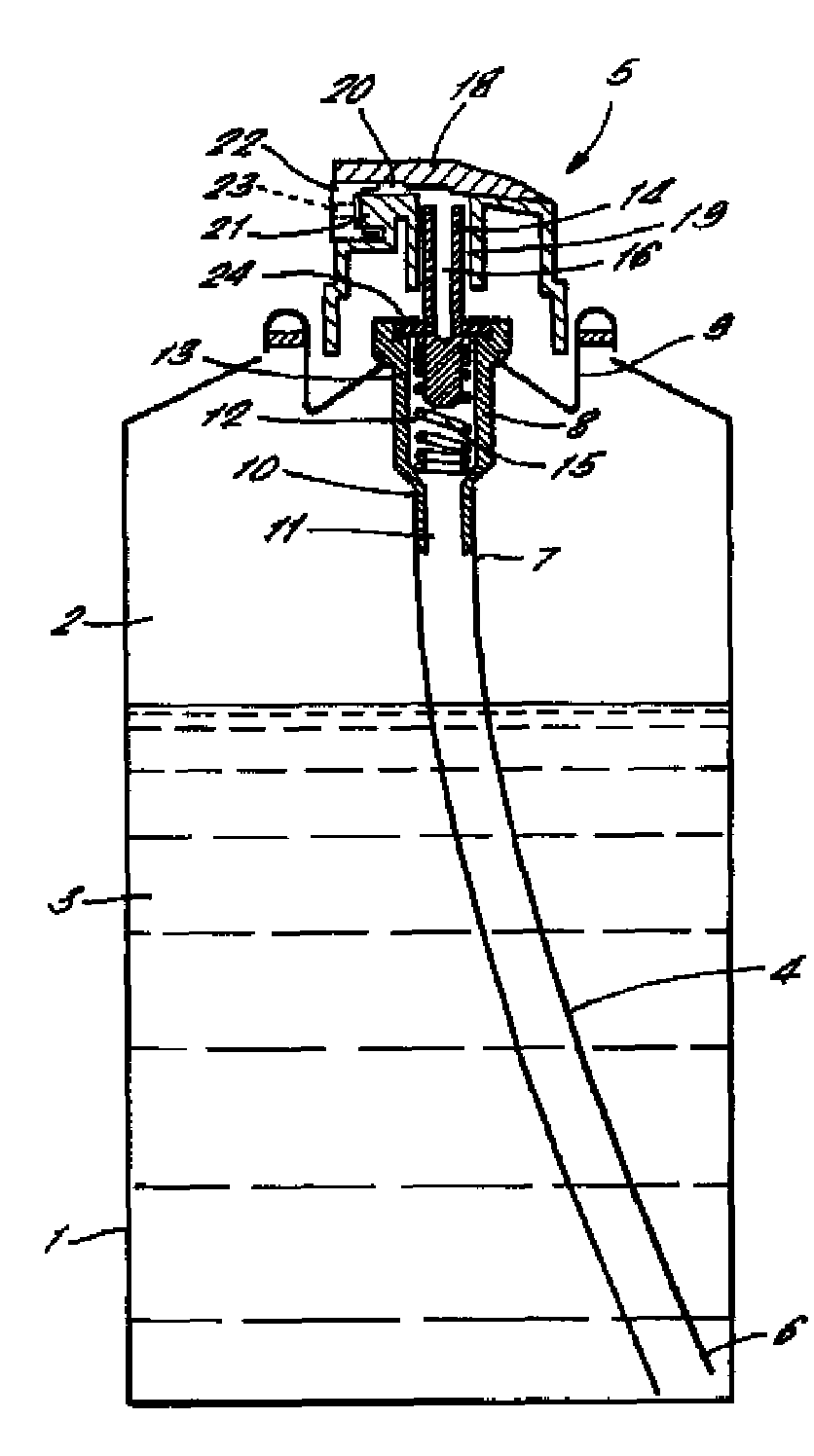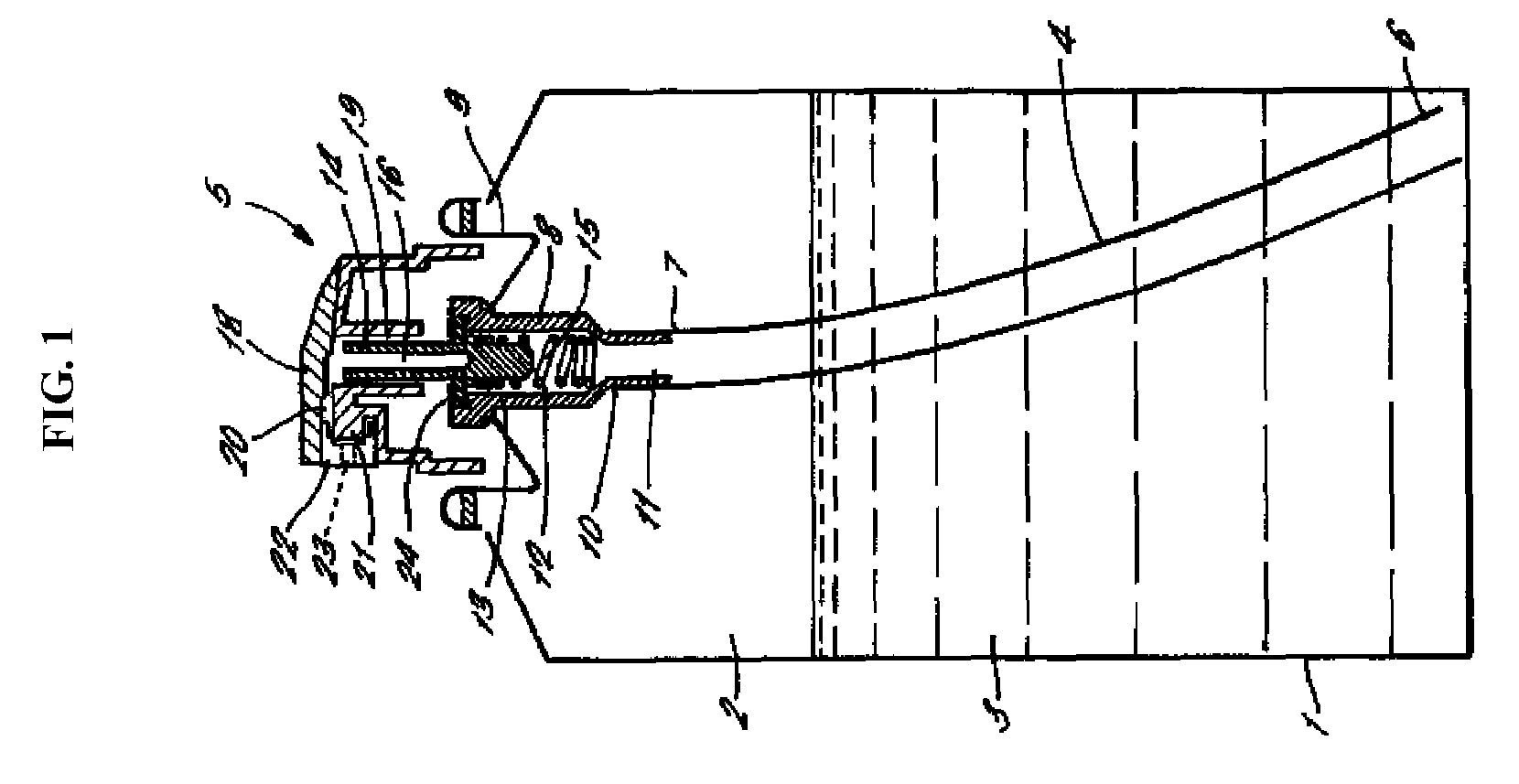Compressed gas propellants in plastic aerosols
a technology of compressed gas and aerosol, which is applied in the direction of transportation and packaging, liquid transfer devices, detergent compounding agents, etc., can solve the problems of changing spray performance, limiting the utility of plastic aerosol containers using compressed gas propellants, and limited propellants that can be used
- Summary
- Abstract
- Description
- Claims
- Application Information
AI Technical Summary
Benefits of technology
Problems solved by technology
Method used
Image
Examples
examples
Gas Permeability
[0073]Permeability is the process by which mass (gas, liquid, or solid) transfers from one side of a non-porous material, such as a plastic, to the other side. For a compressed gas, the permeation rate for a container is directly proportional to the pressure difference of compressed gas across the container surface, directly proportional to the permeability of the gas in the plastic, directly proportional to the surface area of the container, and inversely proportional to the thickness of the container. In general for most plastics, carbon dioxide permeates 2-5 times faster than oxygen, which permeates 3-6 times faster than nitrogen under the same conditions as shown in Table 1. Permeability will also change as properties of a particular plastic are changed, such as crystallinity and orientation. The high permeability of carbon dioxide for most plastics makes it difficult to maintain sufficient pressure over long storage periods.
[0074]
TABLE 1Permeability (gram / m × se...
PUM
 Login to View More
Login to View More Abstract
Description
Claims
Application Information
 Login to View More
Login to View More - R&D
- Intellectual Property
- Life Sciences
- Materials
- Tech Scout
- Unparalleled Data Quality
- Higher Quality Content
- 60% Fewer Hallucinations
Browse by: Latest US Patents, China's latest patents, Technical Efficacy Thesaurus, Application Domain, Technology Topic, Popular Technical Reports.
© 2025 PatSnap. All rights reserved.Legal|Privacy policy|Modern Slavery Act Transparency Statement|Sitemap|About US| Contact US: help@patsnap.com



